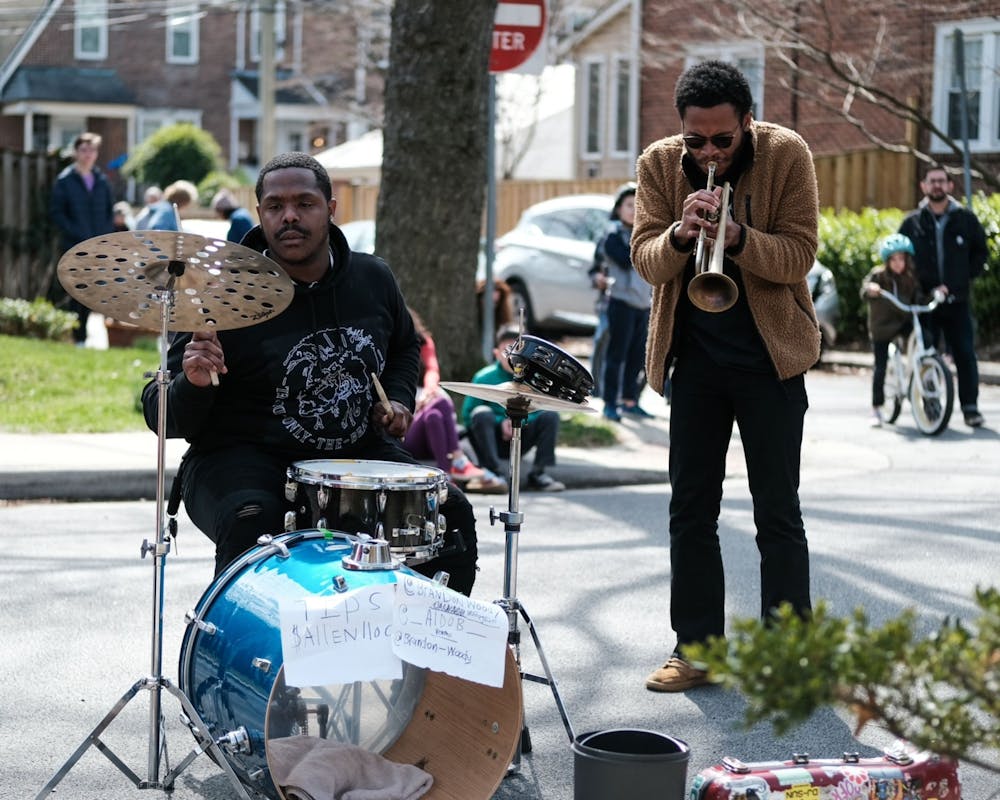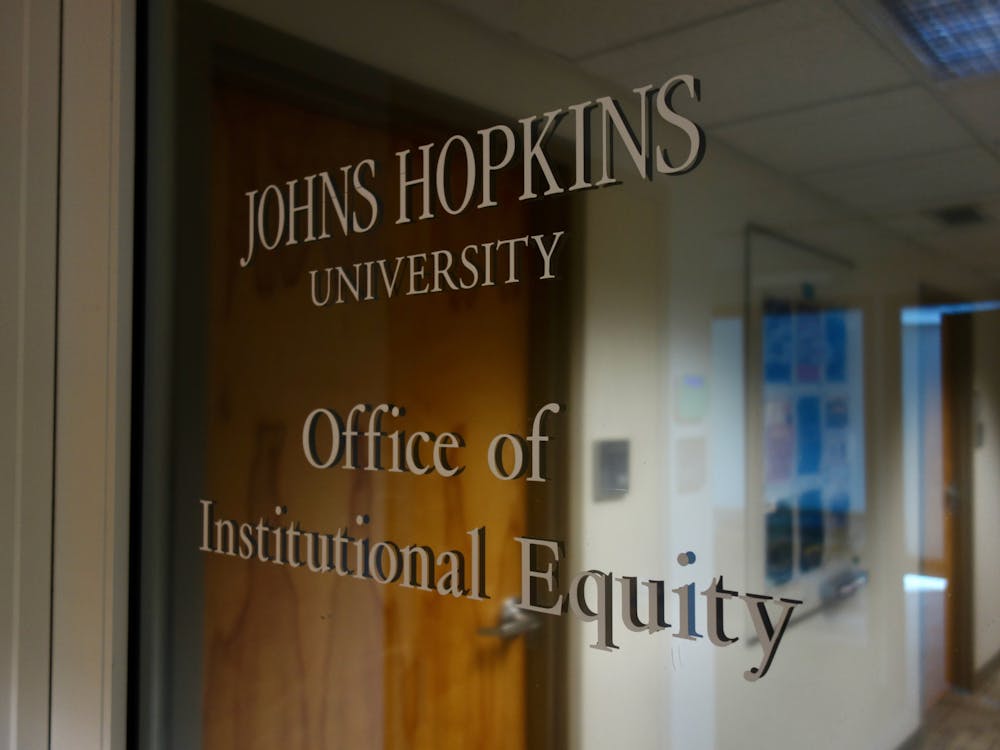If there’s one thing the coronavirus (COVID-19) pandemic hasn’t completely destructed, it’s the spirit of the arts. We’ve seen it all: viral TikTok snippets, Instagram livestreams, apartment windowsill jam sessions, art-making and concerts brought to you on what has become the most loved and hated platform of our time — Zoom.
However, as we turn to the arts as one of our only outlets amid the rather suffocating (but also privileged) mandate of staying at home, we must not forget that, while the arts are a temporary coping mechanism for some, they are a livelihood for others.
Baltimore’s art scene, like many other sectors, has been hit hard by COVID-19.
In an interview with The News-Letter, Jeannie Howe, executive director of the Greater Baltimore Cultural Alliance, explained some of the ways in which COVID-19 has placed many in difficult predicaments.
“One of our staff works on issues related to artist space, and for example, she has people calling her who are in danger of being evicted either from where they’re living or from their studio space,” Howe said.
The closure of various other institutions and businesses has also created a damaging ripple effect.
“Unfortunately, there are a number of people who have lost their jobs, and for artists, that’s particularly difficult because often they sustain themselves not just through their artwork but also through service jobs... and those jobs, of course, are gone also. As far as the museums, I know that some have laid off part-time staff,” she said.
The Maryland State Arts Council is currently trying to navigate the alarming need for emergency funds.
“A number of nonprofit organizations and the Maryland State Arts Council came together in partnership with Maryland Philanthropy Network to have direct conversations with funders about what artists and organizations were experiencing and how best to help. There is going to be a special fund set up for emergency relief specifically for artists that will be operated out of the Baltimore Office of Promotion and the Arts,” Howe explained.
Howe also expressed that, at times like these, it is important for funders to make accommodations, if possible.
“Funders around Baltimore and around the country have really been urged to drop restrictions on current grants,“ she said. “If a funder gave an organization money to sponsor a performance, which now is not going to happen, some of them are saying, ‘It’s okay, you go ahead and keep that money to keep your lights on.’ Being able to be flexible about grants that have already been given is also a part of the strategy.”
The Greater Baltimore Cultural Alliance has also compiled a list of local relief resources, specifically for artists and creators.In the meantime, museums, organizations and artists have been forced to become creative with how they transform their individual platforms.
“Museums also are really turning to connecting with their audiences in a virtual space, and being really innovative about how they continue to make that connection and to contribute to the social fabric of Baltimore,” Howe said.
While virtual adjustment may come as a form of innovation, it also challenges the roles of physical venues and artists whose careers and operations depend on live performances.
The Undercroft, a volunteer- and donation-based arts center and performance venue located in the basement of the Church of the Guardian Angel that also functions as a daycare facility, is one of many spaces that has been affected. In an interview with The News-Letter, The Undercroft collective members Chris Belkas, Jenna Conny, Steph Joyal and Sean McFarland provided their insights on how the lockdown has affected their activities.
“In March, it ended up being that we had a two-week gap without any shows, and during that time is when things started to shut down statewide,” Belkas said.
Joyal explained the difficult reality for the collective.
“We are shut down right now. We are not operating. We have had to cancel all of our shows,” he said.
While Belkas understands the financial implications of having to shut down, he also expressed his concerns for what the loss of the physical venue space means for The Undercroft’s community of artists.
“This is 100 percent of the culture that we are embedded in — live performance and community space. This is a pause in a lot of what our entire mission is. It’s the people making money off of it, but it’s also our identities,” he said.
Despite such looming anxieties about the future, the collective also spoke about the different ways community members are coming together to help one another. For example, the Church of Guardian Angel has been running a food pantry which has been able to continue operating as an “essential” service under government guidelines.
“It has been really nice with the church figuring out because... we can still be a resource to the church community, helping out with the food pantry,” Conny said.
McFarland commented on the ways in which he’s witnessed a lot of unity in the midst of the crisis.
“I find a lot of really wonderful inter-venue network solidarity,“ he said. “In our community as a whole, we’ve seen a huge uptick in live internet performances, like recorded videos being posted over Zoom meetings [and the Twitch channel] Quarantv (@Quaran.tv).”
However, Joyal acknowledged that these temporary solutions can’t necessarily mitigate the long-lasting repercussions that might change the way they live forever.
“My hope is that we’re able to adapt,“ Joyal said. “My second hope is that more people will appreciate the idea of what kind of work is essential and what kind of work is not essential...We do what we can to pay artists as much as possible, but it’s about the joy of the act and the necessity of having that physical and social space. Those are the things that we see as essential to our quality of life, but it’s not something that needs to be capitalized on.”
Before Maryland Governor Larry Hogan issued the statewide lockdown earlier last week, the Creative Alliance, another Baltimore-based community and performance space located in Highlandtown, East Baltimore, took immediate steps to sustain the essence of live performances with a unique project.
Called “Sidewalk Serenades: Close (But Not Too Close) Personal Concerts,” the program offered residents across Baltimore the opportunity to purchase a concert outside their home, where one or two musicians would give a short performance for neighbors. Collected funds were allocated to both the artists and the organization. While the stay-at-home order has forced the Creative Alliance to halt the program, they were able to successfully coordinate over 80 sidewalk performances.
Creative Alliance Performance Director Josh Kohn explained the inspiration behind the project.
“With each [cancelled] concert it felt like we were putting a knife into the ability of musicians and performers... to sustain their work and make a living. We also realized that everyone in the community is going to be on their tablets, on their phones, in front of screens for weeks at this point. Is there any way that we can think about sustaining and preserving that live experience that we deliver at an organization like this? And that’s where we came up with this idea,” he said.
Kohn also emphasized that the organization prioritized its safety measures by ensuring that the outside performances were all kept at a distance from spectators watching from inside their homes, and that if the performance involved a duo, the two performers had already established contact on a regular basis.
“We’re trying to make sure that we’re a vital response organization even though our doors are closed,” he said.
The Creative Alliance has congregated local emergency resources and upcoming virtual events for community members here.
Brandon Woody, a Baltimore-based trumpet player, and Allen Branch (also known as Aldo B) were the first performers of the entire series.
In an interview with The News-Letter, Woody reflected on the success of the performances, recalling neighbors from each designated home coming out from a few blocks away to listen with their families. With concerts across the country cancelled for the foreseeable future, the Sidewalk Serenades offered a brief opportunity for community members to find solace in a sense of hope, carried by uplifting tunes that filled the empty streets of Baltimore.





